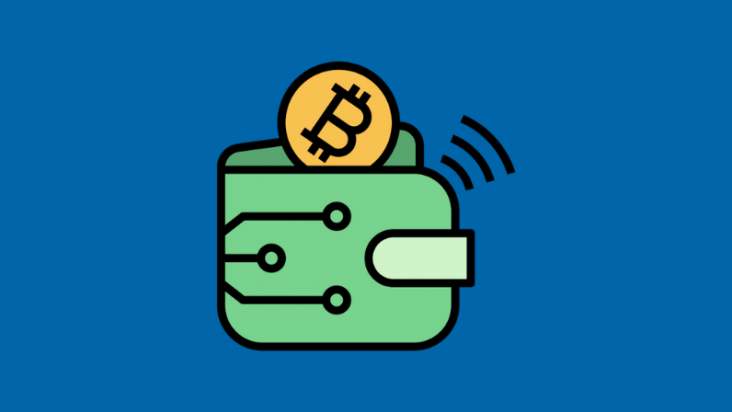

Stablecoins have emerged as one of the most significant innovations in the blockchain and cryptocurrency space. As blockchain technology continues to evolve, stablecoins offer a solution to some of the most pressing challenges faced by traditional cryptocurrencies, including volatility, scalability, and widespread adoption. By pegging their value to a stable asset, such as a fiat currency or a basket of commodities, stablecoins combine the advantages of cryptocurrencies—such as decentralization, transparency, and speed—with the stability of traditional financial assets.
What Are Stablecoins?
At their core, stablecoins are digital assets that aim to maintain a stable value by being pegged to an underlying asset, most commonly a fiat currency like the US dollar, the euro, or other national currencies. Unlike traditional cryptocurrencies such as Bitcoin or Ethereum, which experience significant price fluctuations, stablecoins are designed to minimize volatility, making them more suitable for everyday transactions and a wide range of financial applications.
The concept of stablecoins is not new. For many years, researchers and developers have been exploring ways to create digital currencies that can combine the decentralization and security benefits of blockchain technology with the stability required for mainstream use. In recent years, this concept has gained significant traction, with the total market capitalization of stablecoins growing exponentially.
The Importance of Stablecoins in the Blockchain Ecosystem
Stablecoins play a crucial role in bridging the gap between traditional finance and the world of decentralized finance (DeFi). Here’s why they are important:
Reducing Volatility
The primary issue with many cryptocurrencies is their high volatility. While the potential for massive gains makes digital assets like Bitcoin and Ethereum attractive for speculative investors, the dramatic fluctuations in their value make them less suitable for everyday transactions. Stablecoins, on the other hand, are designed to maintain a stable value, providing a more predictable asset for people to use in their daily financial activities.
For businesses and consumers looking for stability, stablecoins provide a digital currency that can be used for transactions without the fear of sudden value changes. For example, the price of Bitcoin could fluctuate by thousands of dollars in a single day, making it impractical for retail transactions. In contrast, stablecoins like USDC (USD Coin) are pegged to the US dollar, ensuring that their value remains relatively stable.
Enhancing Liquidity
Liquidity is a vital component of any financial system, and stablecoins provide an efficient way to increase liquidity within the blockchain ecosystem. Because stablecoins are pegged to fiat currencies, they offer a more stable and easily tradable asset. This is particularly valuable in the decentralized finance (DeFi) space, where liquidity pools and decentralized exchanges (DEXs) depend on stable assets to facilitate trades and lending.
For example, platforms like Uniswap and Curve Finance use stablecoins as liquidity pairs for exchanging various tokens. This increases the efficiency of transactions and reduces slippage, making it easier for users to trade assets within the DeFi ecosystem.
Bridging Traditional Finance and Cryptocurrencies
One of the key challenges in the adoption of cryptocurrencies has been the reluctance of traditional financial institutions to embrace digital assets. This is due in large part to concerns about volatility, regulatory uncertainty, and security issues. Stablecoins, by offering a stable and secure digital currency, serve as a bridge between traditional finance and the blockchain ecosystem.
For example, banks and financial institutions can use stablecoins for cross-border payments or settlement services, offering faster and cheaper alternatives to traditional banking systems. These institutions can avoid the complexities and high costs of currency exchange and intermediary fees, making transactions more efficient and cost-effective.
Facilitating Smart Contracts and DeFi Protocols
Stablecoins have become a cornerstone of the decentralized finance (DeFi) movement, enabling smart contracts, lending protocols, and yield farming without the risk of price volatility. Many DeFi platforms, such as Aave, Compound, and MakerDAO, use stablecoins as collateral for loans or as a medium of exchange within their ecosystems.
By using stablecoins in DeFi protocols, users can participate in lending and borrowing without the risk of losing significant value due to price fluctuations. For example, a user could lend USDC to a DeFi lending platform and earn interest on that stablecoin without worrying about the market value of USDC changing dramatically over time.
Supporting Cross-Border Payments and Remittances
Cross-border payments have long been an expensive and slow process, with traditional financial systems taking days to complete transactions and charging high fees. Stablecoins offer a solution by enabling near-instantaneous and low-cost international money transfers.
For example, Filipino workers in the UAE can send remittances in USDC to their families back home, who can then exchange the stablecoins for local currency through crypto exchanges or peer-to-peer platforms. This method bypasses traditional remittance channels, significantly reducing transaction fees and speeding up the process.
Promoting Financial Inclusion
Stablecoins also have the potential to promote financial inclusion, especially in regions where traditional banking services are limited or unavailable. By offering a digital currency that can be accessed through a smartphone and used for various financial services, stablecoins can empower individuals who are underserved by the banking system.
In countries with unstable currencies or high inflation rates, stablecoins provide an alternative store of value. For example, in Venezuela, where hyperinflation has rendered the national currency almost worthless, people have turned to stablecoins like Tether (USDT) to preserve their savings and conduct transactions.
Types of Stablecoins
There are several types of stablecoins, each with its mechanisms for maintaining a stable value. These can be categorized into three main types:
Fiat-Collateralized Stablecoins
These stablecoins are backed by reserves of fiat currencies such as the US dollar or the euro. For every stablecoin issued, there is a corresponding amount of fiat currency held in reserve. The value of the stablecoin is tied directly to the value of the underlying fiat currency.
Examples: USDC (USD Coin), Tether (USDT), TrueUSD (TUSD)
Crypto-Collateralized Stablecoins
Crypto-collateralized stablecoins are backed by other cryptocurrencies rather than fiat currency. These stablecoins are typically overcollateralized to account for the volatility of the collateral asset. For instance, if a user wants to create a stablecoin backed by Ether (ETH), they would need to deposit more ETH than the value of the stablecoins they want to generate.
Examples: DAI (backed by Ethereum), sUSD (backed by Synthetix)
Algorithmic Stablecoins
Algorithmic stablecoins are not backed by any collateral but instead use algorithms to control the supply of the stablecoin and maintain its peg to a stable asset. When the price of the stablecoin deviates from its target value, the algorithm adjusts the supply to bring it back in line.
Examples: TerraUSD (UST) – Note: TerraUSD collapsed in 2022 due to its algorithmic design.
Challenges and Risks of Stablecoins
While stablecoins offer many advantages, there are also challenges and risks associated with their use:
Regulatory Uncertainty
The regulatory landscape for stablecoins is still developing, with governments and financial regulators worldwide grappling with how to classify and regulate these digital assets. The uncertainty surrounding stablecoin regulations could impact their adoption and use, particularly if governments impose stringent rules or outright bans.
Centralization Risks
Some stablecoins, particularly fiat-collateralized ones, are issued by centralized entities. This centralization creates risks related to counterparty risk, as the issuing entity may face financial difficulties or legal challenges. Additionally, centralized stablecoins may be subject to government control, undermining the decentralized ethos of blockchain.
Collateral Management
For crypto-collateralized stablecoins, managing the collateral is critical to maintaining stability. If the collateral asset experiences significant price fluctuations, it may require additional collateral to be deposited, or the stablecoin may become undercollateralized. This is especially a concern in volatile market conditions.
Market Manipulation
In some cases, market manipulation could affect the value of stablecoins, especially algorithmic stablecoins that rely on market forces to maintain their peg. If malicious actors can manipulate the supply or demand of the stablecoin, they could undermine its stability.
Growing Importance of Stablecoins
Stablecoins have become an integral part of the blockchain ecosystem, providing stability, liquidity, and efficiency to the rapidly evolving world of decentralized finance. By bridging the gap between traditional finance and blockchain technology, stablecoins offer a secure and practical solution for various financial applications, including cross-border payments, remittances, e-commerce, and DeFi protocols.
While stablecoins hold significant potential, they also face challenges, particularly in terms of regulation, centralization risks, and collateral management. However, as the technology matures and regulatory frameworks are developed, stablecoins are likely to play an increasingly important role in the global financial system, driving innovation and financial inclusion. As such, they represent a promising avenue for further exploration within the blockchain ecosystem.








